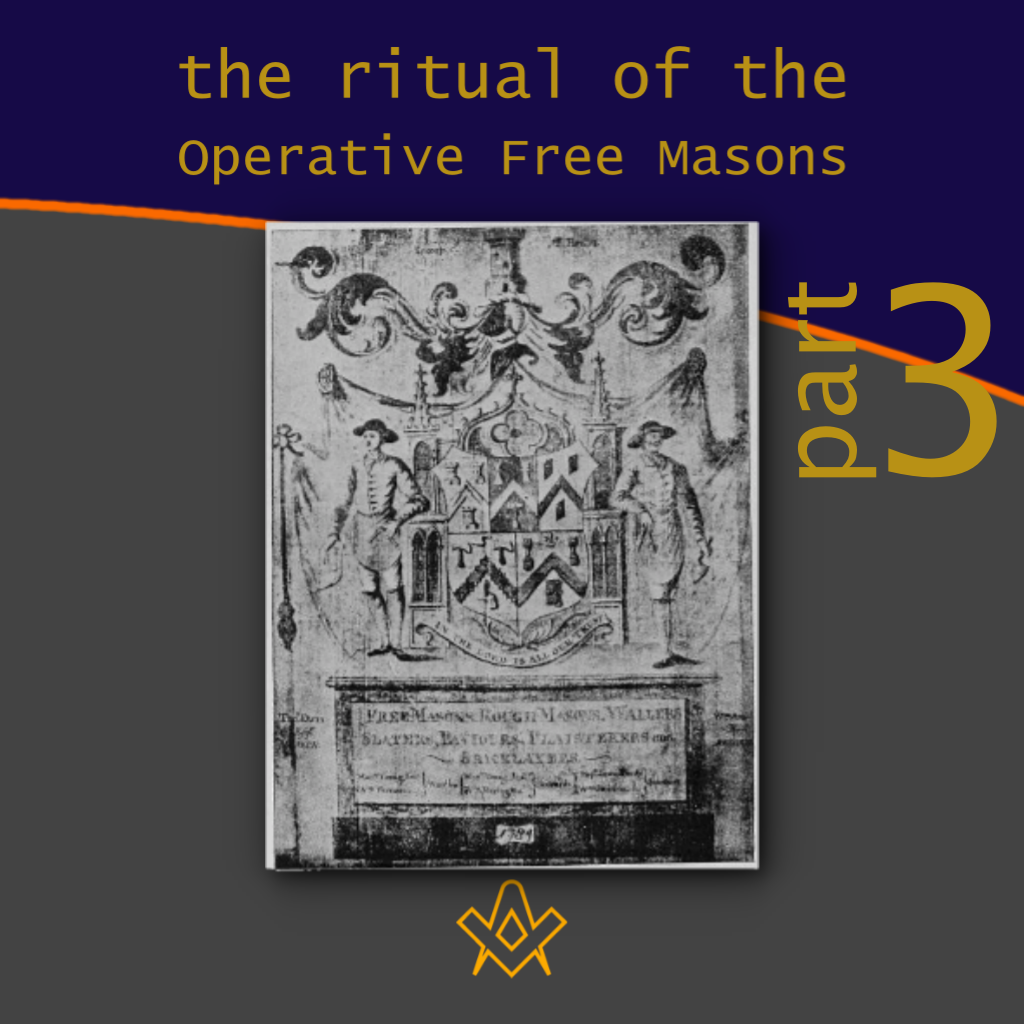The original paper was written, first, to prove that Speculative Free Masonry was derived from Operative Free Masonry; second, to give some account of the Operative Free Masons, of their Ritual, and of their customs.
By Thomas Carr, M.D., P. M. Honorary Member of the Guild of Operative Free Masons
Part 3 — Existing Operative Free Masons.
The full title of the existing Society of Operative Free Masons, to whose Ritual I am about to refer, is that of – “The Worshipful Society of Free Masons, Rough Masons, Wallers, Slaters, Paviors, Plaisterers, and Bricklayers.”
The Rough Masons and Wallers are inferior craftsmen doing rougher work than that done by the Free Masons.
They are not Fellows of the Lodges of Free Masons, but may be regarded as Associates, having however ceremonies of their own.
They are regarded as “scabblers” and their work is not “in course.” They are allowed to enter the 1st Degree or Apprentice Stone Yard, but not the Second or Fellow’s Yard.
The Slaters, Paviors, Plaisterers, and Bricklayers are of course distinct trades.
In London the Paviors, Plaisterers, and Bricklayers (known as the Tilers and Bricklayers), are also three separate and distinct companies.
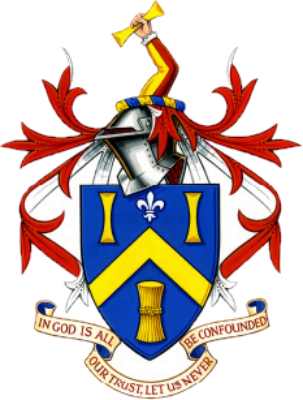
Coat of Arms of the Tylers and Bricklayers’ Company
http://www.tylersandbricklayers.co.uk,
Fair use, wikipedia
This title of the Society, comprising so many distinct trades is at first sight not a little curious but on investigation it was found that it was not an uncommon state of affairs in the 17th Century.
In Kendal in 1667, the 12th Trade Company comprised. Free Masons, rough masons, wallers, plaisterers, slaters, and carpenters.
In Oxford, a Company was incorporated in 1604 called’ “The Company of Free Masons, Carpenters, Joiners, and Slaters of the City of Oxford.”
In Gateshead a most curious conglomeration of trades was incorporated by a Charter of Cosin Bishop of Durham in 1671.
The trades enumerated are Free Masons, Carvers, Stonecutters; Sculptures, Brickmakers, Tilers, Bricklayers, Glaysiers, Penter-stainers. Founders, Neilers, Pewterers, Plumbers, Millwrights, Sadlers, Bridlers, Trunckmakers, and Distillers.
At Edinburgh, the incorporation of St. Mary’s Chapel’ at one time embraced a great variety of trades such as Sieve wrights, Coopers, Upholsterers, Bowmakers, Slaters, Glaziers, Painters, Plumbers, and Wrights as well as Masons.
Later there were only two in union, the Wrights and’ the Masons, and finally these separated, each becoming a distinct Corporation.
Our greatest interest centres in the City of Durham where we find the combination of trades- the same as in the Society we are specially concerned with.
In 1594 Bishop Matthew Hutton incorporated the “Rough Masons, Wallers, and Slaters.” In 1609 Bishop James confirmed their Bye Laws and Ordinances in which they are designated “Rough Masons, Wallers, Slaters, Paviors, Tylers, and Plaisterers.”
On April 16th, 1638, Bishop Morton gave a new charter to “The Company Societie and Felowshipp of Free Masons, Rough Masons, Wallers, Slaytors, Pavers, Plaisterers, and Bricklayers.”
The Bishops of Durham were Counts Palatinate, so charters originated from them.
These operatives became freemen of the City, which conferred many rights and privileges upon them, and many of the gentry of the County became Honorary Members and regarded it as an honourable distinction; just as today many members of the mercantile and professional classes become Freemen and Liverymen of the Trade Companies of London.
I am a Liveryman of the Worshipful Society of Apothecaries of the City of London.
The Mason’s Company of London was incorporated in the second year of Henry IV (1411) and was granted arms in the 12th year of Edward IV (1473) which are still used by them.
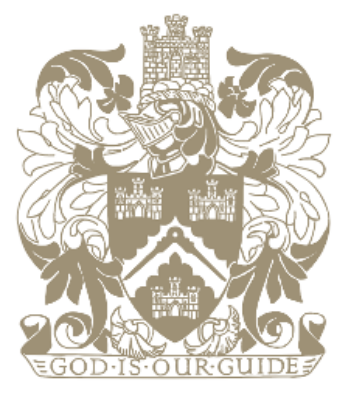
Arms of the Mason’s Company of London source: wikipedia
The Slaters of London also have arms although not a recognized Company; the Paviors is a small London Company; the Plaisterers were incorporated in 1501 and the Tilers and Bricklayers in 1508.
In London, disputes arose between these various trades and others of a kindred nature as to what was their respective work; these quarrels were particularly acute in and about 1356, and many references to them are found in the old records. Again in 161 5 and 1632 similar difficulties arose.
In the year 1677 “The Worshipful Society of the Free Masons of the City of London” issued a map of England for the information of all the Operative Free Masons, and it showed the country divided into eight districts:
(1) City of London.
(2) Westminster.
(3) Southern.
(4) Bristol.
(5) Chester.
(6) Island of Anglesea.
(7) Lancaster.
(8) York.
In former times, Durham had apparently been a separate district.
The Worshipful Society of Free Masons, Rough Masons, Wallers, Slaters, Paviors, Plaisterers, and Bricklayers, claims a coat of arms which still hangs in the Guild Hall at Durham and which is really a combination of the arms of the separate trades.
In chief, on the dexter side, are those of the Masons; in the centre those of the Slaters; on the sinister side those of the Paviors; below on the dexter side, those of the Plaisterers; on the sinister side, those of the Tilers and Bricklayers.
The arms in each case are similar to, if not identical with, those of the London Companies. The date on this armorial combination is 1784, but the incorporation it represents, as already stated, was made in 1638.
In London the use of the word “Free” in the title Free Mason was allowed to lapse towards the end of the 17th Century; possibly because it had ceased to be a distinction when members of all the other London Companies were equally free, and probably because the Free Masons had ceased to include Rough Masons &c. in their Corporation.
As far as can be ascertained both London and Westminster Free Masons dropped the association with other trades in about 1655-6. This is only a suggestion as it is very difficult to get any exact knowledge on this point.
As regards York Division we can give more accurate information. W. Bro. Stretton informs me that when he took his obligation as an Entered Apprentice to the Operative Society in 1867 Rough Masons, Wallers, Slaters, Paviors, Plaisterers, and Bricklayers were all present.
When he was passed to the Degree of a Fellow of the Craft in May, 1874, only Free Masons were present, as was also the case when he was advanced to the Third Degree, that of a Super Fellow.
The Trade Union Act of 1871 had been passed in the meantime and this was the cause of the separation of the Rough Masons, Wallers, Slaters, Paviors, Plaisterers, and Bricklayers from the Free Masons in the York division.
These trades began to leave the Free Masons in 1871 as soon as the Trade Union Act was passed and by the end of 1883 there were none left in Lodges 91 or 110, and W. Bro. Stretton informs me that there have been none in the York Division for some years.
Certainly since 1883 they have not had notices sent them to attend Meetings of Free Masons; but they still have meetings of their own, and Operative Masons tell me that some of the old Ritual is worked by some of the Trade Unions, but I have had no opportunity of verifying this statement, although I accept it.
The old Operative members in the York Division still (1911) regard these Rough Masons &c. as Associates or Free Brothers but not as Fellows.
They exchange the 1st Degree Grip and Word with them and will give them money for a drink; but they are not Fellows or Accepted Masons and they will not teach them anything, higher than the First Degree.
These Operative Free Masons are divided into two classes, and each class into seven degrees. The two classes are Straight or Square Masons, and Round or Arch Masons.
A man can only belong to one of these two classes or kinds, either the Square or the Arch, never to both, although a man may be transferred from one to the other, usually from the Square to the Arch, if the Masters so order it.
When a man is apprenticed he selects which form he intends to follow.
The “Square” is the symbol of the Square Mason and the “Compasses” the symbol of the Arch Mason. Blue is the colour of the Square Mason, and Red is the colour of the Arch Mason.
A good deal of elaborate stuff has been written of recent years as to the origin of these colours in Speculative Masonry, the Orders of the Garter and of the Bath have been suggested as prototypes for colour.
A lot of time and imaginative writing would have been saved by a reference to the customs of the Operatives. The Free Masons’ original arms were granted them by Edward IV but the combined Trades arms have two supporters whose first appearance I have been unable to trace.
Of these supporters the one on the dexter, or right, side has a “square” in his hand and is a Square Mason and his clothes are faced with Blue. The one on the left, or sinister, side has a pair of “compasses” in his hand and is an Arch Mason and his clothes are faced with Red.
Each of these two great classes of Square and Arch Masons is divided into Seven Degrees, with special secrets and special working rules and technical instruction restricted to each Degree.
1. The Apprentices to the Craft of Free Mason.
2. The Fellows of the Craft of Free Mason.
3. The Super Fellows who have their Mark.
4. The Super Fellows who also are Erectors on the Site.
5. The Intendents and Super Intendents or Menatzchim.
6. Those who have passed the Technical Examination for the position of Master. Really Certified Masters, known as Passed Masters. Also known as Harodim particularly in Durham and the North.
7. The Grand Masters, of whom there are only three.
In these two higher grades, VI and VII, it is possible for a man of high social position to be a Passed Master or a Grand Master in both Square and Arch Masonry.
The Operative Lodges to which I have the honour to belong are Nos. 91 and no, both situated at Leicester and both in the York Division, not because of their geographical position but because of their origin. Really they are in the part of England belonging to Westminster.
No. 91 was founded in 1761 at Leicester under the authority of the Worshipful Society of Free Masons of the City and Division of York, for Free Masons who were sent from York to repair the Churches at Leicester in that year, and who had, most of them, been previously employed on York Minster.
This Lodge was in a languishing condition from 1883 until 1909, only meeting once a year; but it is now in good condition again, with regular monthly meetings at high XII on every Second Thursday.
The Speculative Lodge No. 279 on the Grand Register of England was formed in 1790 by a split from this Operative Lodge.
Charles Horton, the First Master of the Operative Lodge No. 91, becoming the First Master of the Speculative Lodge No. 562, now No. 279.
The other Operative Lodge is the Mount Bardon Lodge No. 110 with over 300 members and works at the Bardon Hill Quarries.
It was founded by George Stephenson in 1831 when the Leicester and Swannington Railway was being made.
I owe my introduction to both these Lodges to my friend W. Bro. Clement E. Stretton, Civil Engineer of Leicester; who is PPrGSW. for Leicestershire, P.M. and P.Z. 279 Speculative, and Past Third Grand Master VII Degree in the Operative, York Division.
As already stated, since the introduction of Trade Unionism these Operative Guilds have lost their supremacy.
In 1867 there were over 2,300 Operative Masons belonging to the Society in Leicestershire, in 1910 there were under 600.
Extracted from: The Ritual of the Operative Free Masons (1911) by Thomas Carr, M.D. Honorary Member of the Guild of Operative Free Masons.

The Ritual of the Operative Free Masons
By: Thomas Carr, M.D.
This work has been selected by scholars as being culturally important, and is part of the knowledge base of civilization as we know it.
This work was reproduced from the original artifact, and remains as true to the original work as possible.
Therefore, you will see the original copyright references, library stamps (as most of these works have been housed in our most important libraries around the world), and other notations in the work.
This work is in the public domain in the United States of America, and possibly other nations. Within the United States, you may freely copy and distribute this work, as no entity (individual or corporate) has a copyright on the body of the work.
As a reproduction of a historical artifact, this work may contain missing or blurred pages, poor pictures, errant marks, etc. Scholars believe, and we concur, that this work is important enough to be preserved, reproduced, and made generally available to the public. We appreciate your support of the preservation process, and thank you for being an important part of keeping this knowledge alive and relevant.
Recent Articles: masonic history
 Protestantism and Masonic Influence in Brazil Discover the untold story of how Freemasons helped Southern Americans immigrate to Brazil post-Civil War, fostering economic and educational growth in Santa Bárbara d’Oeste and Americana. Learn about their pivotal role in establishing Protestant churches and ensuring the secularity of the Brazilian State amidst a Catholic-dominated society. |
 Explore the proper use of the sacred word in Brazilian Freemasonry through an analysis of Masonic literature and Bible translations. Uncover the errors in pronunciation and the need for corrections to maintain liturgical coherence in rituals. Discover insights on Masonry, rituals, and the Hebrew word Boaz. |
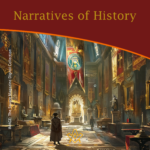 Narratives of History |
 A Very Royal Sesquicentenary |
 Unveiling the Enigma: Discover the Royal Society's Legacy and its Impact on Science. Delve into the fascinating history of the Royal Society, the prestigious UK academy shaping scientific progress since 1660. Explore its pivotal role in advancing knowledge, fostering collaboration, and unlocking the secrets of the universe. Prepare to be amazed! |
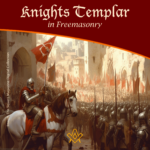 Knights Templar in Freemasonry Uncover the Mysteries of the Knights Templar in Freemasonry! Delve into the intriguing world where chivalry and symbolism intertwine. Discover the captivating rituals and ancient secrets behind the Knights Templar Masonic Orders. Explore the historical connection and delve into the enigmatic narratives that continue to fascinate enthusiasts today. Unveil the hidden truths now! |
 The Royal Arch stands as the rainbow of promise in the Ritual; it stands as the promise of the resurrection; of that which was lost and that it shall be recovered. The question arises as to whether the Master's Word was originally communicated in the Third Degree? On this point there is some diversity of opinion. Originally published in 1915, this insight into the Fourth Degree – the Holy Royal Arch – is as relevant today as it was over 100 years ago. |
 Unveiling the Mysteries of Druidism: Discover the Intriguing Connection with Freemasonry. Explore the ancient spiritual practice of Druidism and its fascinating ties to the enigmatic world of Freemasonry. Delve into the shared symbolism and rituals that have captivated minds for centuries. Unlock the secrets of these intertwined traditions today! |
 Uncover the legacy of freestone masons and their pivotal role in crafting medieval cathedrals. Discover the artistry behind their techniques, the hierarchy within their craft, and the enduring impact of their intricate carvings. A deep dive into the world of these master craftsmen awaits you! |
 Unearth the intriguing journey from Vincha Culture to Freemasonry. Discover how ancient building methods intertwine with modern Masonic philosophies. This exploration will shed light on the fascinating link between the Serbian term "shestarenye" and the symbolic significance of the compass in Freemasonry. |
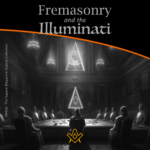 Freemasonry and the Illuminati Unravel the enigmatic world of Freemasonry and the Illuminati in our latest exposé. Dive into centuries-old mysteries, debunk conspiracy theories, and discover the truth behind these elusive societies. Are they puppet masters or mere myths? Join us as we dissect history and fact from fiction. |
 The Île des Templiers, or “Island of the Templars” lies within a leafy park in Paris. The execution site of Jacques du Molay, the last Grand Master of the Knights’ Templar bears a plaque with the epitaph ‘A cet endroit / Jacques de Molay / Dernier grand maître / de l'ordre du temple / a été brûlé le 18 Mars 1314’ (‘In this location / Jacques de Molay / Last grand master / of the order of the temple / was burned on 18 March 1314’) |
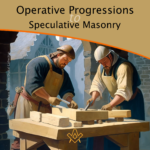 Operative Progressions to Speculative Masonry Both Operative and Speculative Masonry are an important part of the modern fraternity of Freemasonry, which combines elements of both traditions. Today, Freemasonry is a fraternity that is open to men of good character, who are interested in personal development and in making a positive contribution to their communities. |
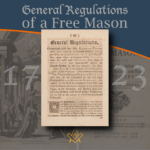 General Regulations of a Free Mason, 1723 General Regulations of a Free Mason as contained in Anderson's Constitutions of the Freemasons, published 1723. the Regulations are of great historical interest. Compiled by George Payne, the second Grand Master of the Premier Grand Lodge of England, they were printed in 1722/3, thus published just over five years after the formation of the Grand Lodge 1717. |
 The Genesis of the 1723 Book of Constitutions 2023, marks the three hundredth anniversary of the publication of the first printed Book of Constitutions of the Grand Lodge formally established in London two years previously. This is an anniversary whose significance extends beyond freemasonry. A paper by Andrew Prescott |
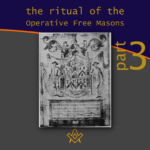 The Ritual of the Operative Free Masons - P3 Existing Operative Free Masons. The ritual I am about to refer, is that of "The Worshipful Society of Free Masons, Rough Masons, Wallers, Slaters, Paviors, Plaisterers, and Bricklayers." By Thomas Carr, M.D., P. M. Honorary Member of the Guild of Operative Free Masons |
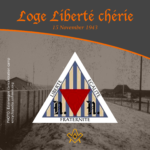 Liberté chérie was a Masonic Lodge founded in 1943 by Belgian Resistance fighters and other political prisoners at Esterwegen concentration camp. It was one of the few lodges of Freemasons founded within a Nazi concentration camp during the Second World War. |
 The Ritual of the Operative Free Masons - P2 If anyone doubts the fact that the formation of Speculative Free Masonry was due to and based upon Operative Free Masonry, it is quite easy to convince him of his error if he will only study the first Book of Constitutions. By Thomas Carr, M.D., P. M. Honorary Member of the Guild of Operative Free Masons |
 In 1881, Freemasonry rose from the ashes of a fire in the mining town of Kokomo, Summit County, Colorado. Corinthian Lodge No. 42, along with Kokomo, no longer exists but it holds the record of having been – at an elevation of 10,618 feet – the highest Masonic Lodge in the USA. |
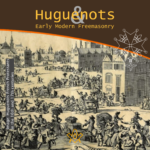 The Huguenots and Early Modern Freemasonry The Huguenots influence in the development of early modern Freemasonry at the time of the formation of the Grand Lodge in London around 1717 / 1723. |
 November is a month of reflection – perhaps due to the fact that we are getting close to the years' end – but also because Remembrance / Armistice Day (11 November) is a significant date in most countries' diaries. |
 Speculative Freemasonry, as practise by Grand Lodge of England, was officially born just over three hundred years ago, is today an international organisation, counting over six million members. It has been subjected to persecution, suppression, and abolition throughout its history. In its infancy, only a couple of decades after its official birth, it had already become a target. |
 The Ritual of the Operative Free Masons - P1 The original paper was written, first, to prove that Speculative Free Masonry was derived from Operative Free Masonry; second, to give some account of the Operative Free Masons, of their Ritual, and of their customs. By Thomas Carr, M.D., P. M. Honorary Member of the Guild of Operative Free Masons |
 American Fraternalism in the 19th and Early 20th Centuries The late 19th and early 20th centuries in the United States has been called the "Golden Age of Fraternalism." How did this come about and why was the idea of joining a fraternal organization so popular? We will explore this question and examine the regalia used by many fraternal organizations in this period. |
 Societas Draconistarum, meaning "Society of the Dragonists"– was a chivalric Order for selected nobility, founded in 1408 by Sigismund von Luxembourg, who through marriage became the King of Hungary (1387–1437) and later Holy Roman Emperor. The Order was fashioned after the military orders of the Crusades, requiring its initiates to defend the cross and fight the enemies of Christianity, in particular the Ottoman Empire. |
 The Perjured Free Mason Detected Was Samuel Prichard a perjured individual, or simply a misguided Freemason? Prichard's book "Free Masonry Dissected" published in 1730, is now used by many Masonic historians as a source of reference with regards to the introduction of the third degree into the Craft. But at the time it was published in 1730, it was not so well received by members of the Grand Lodge of England. |
 17th century and the Holy Royal Arch This article focuses on a period of transition between a point in time when we can safely and historically identify the first formation of what could be called as the ‘Royal Arch’ and the historical events that have preceded it. |
 Most Freemasons have heard the terms 'Operative' and 'Speculative' Masons, and this article helps to understand the difference: |
 Roberts' Constitutions of Freemasonry 1722 Published a year before Anderson's Constitutions, The Old Constitutions Belonging to the Ancient and Honourable SOCIETY OF Free and Accepted MASONS. Originally printed in London England; Sold by J. Roberts, in Warwick-Lane, MDCCXXII.(1722) |
 From 'Songs of religion and life', 1876 by John Stuart Blackie (1809-1895) |
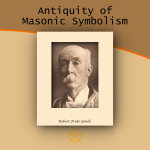 On the Antiquity of Masonic Symbolism Is the Symbolism of Masonry an inheritance derived from the old Masons who flourished before the era of the Grand Lodges (1717); or has it been borrowed from the Rosicrucians or others, after 1717? |
 Mason's Marks – from Egypt to Europe? Mason's marks have been a source of intrigue, not only to Freemasons but to historians and archaeologists. The use of simple pictograms have been employed for millennia by artisans to identify their work. But where did they originate and why? |
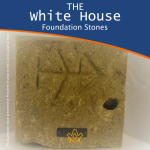 The White House Foundation Stones Further to the articles in our series on the history of the stone masons, we have a rather intriguing addition. During the 1950's renovation of the White House, President Truman retrieved more than 100 stone blocks with stonemasons marks. |
 What the Goose and Gridiron Tavern is in the ancient annals of London Freemasonry, The Green Dragon Tavern is to the memories of the Free-mason, of Boston and New England. |
 Auschwitz concentration camp: video photo article taken in 2013 |
 There are two things of importance happening this day - 27 January |
 Two approaches regarding the understanding of Freemasonry |
 Masonic Research in England c1930 An article which appeared in an American Masonic magazine, c1930 and which was reproduced in England, provoking a little controversy. |
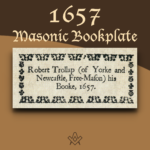 Masonic bookplates the ‘Brethren’s spiritual coats of arms and marks’ |
 The Unlawful Societies Act of 1799 Rebellious Freemasons and the 21st century |
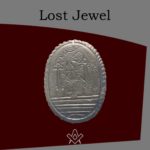 In 1912, Sarah Dowd of Dromore, Ireland, found a Masonic jewel dated 1517 - a date two hundred years before the establishment of Grand Lodge... |
 Freemasonry and Fascist Regime Interesting speech by the famous historian Prof. Aldo A. Mola, who links the fascist regime with the Masonic Associations. |
 Was famous Russian poet Alexander Pushkin a Freemason? And if so, was he a member of the lodge ‘for which all the lodges in Russia were destroyed’? |
 The Importance of Masonic Research Why is accurate - or authentic - Masonic research so important? The importance of making a daily advancement in Masonic knowledge is something that The Square is passionate about promoting. |
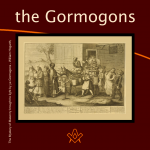 The Antient Noble Order of the Gormogons had a brief existence in the eighteenth century; they left few records or accomplishments, |
masonic knowledge
to be a better citizen of the world
share the square with two brothers

click image to open email app on mobile device



